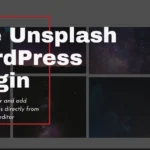Marketing today is a dynamic and constantly evolving challenge, especially for new business owners stepping into unfamiliar territory. To stand out in a crowded marketplace, it’s vital to adopt strategies that blend creativity, data-driven insights, and adaptability. Whether you’re launching a clothing line, a software solution, or a local café, understanding the modern marketing landscape can be the difference between thriving and getting lost in the noise.
Defining Your Target Audience
Understanding who your ideal customer is should be the first step in any marketing effort. You can’t connect with everyone, but you can build a relationship with the right audience.
Start with Demographics and Psychographics
Consider key factors like age, gender, location, and income when outlining your target audience demographics. Then, layer in psychographics to get a deeper understanding of their behavior, interests, and challenges. For instance, are they tech-savvy millennials looking for convenience? Or are they working parents prioritizing affordability?
Create Customer Profiles
Create detailed customer profiles (also known as buyer personas). These profiles act as avatars of your ideal customers, summarizing who they are, what they value, and how they’re likely to engage with your brand.
Dig Into What Matters to Your Audience
Your messaging should always answer, “What’s in it for me?” Understanding what motivates your audience helps you craft messaging that resonates. For example, if your product saves time, highlight how their lives will be easier.
Building a Strong Online Presence
Your online presence is often the first touchpoint for potential customers. Make sure it’s as polished, informative, and user-friendly as possible.
Build a Mobile-Optimized Website
Your website serves as the hub of your online presence. It should be visually appealing, easy to navigate, and designed to work seamlessly across all devices. Make sure your site communicates what your business offers, and include calls-to-action (CTAs) that guide visitors toward their next step, like signing up, purchasing, or contacting you.
Invest in SEO
Search engine optimization (SEO) ensures that your website appears in relevant online searches. Focus on optimizing headings, meta descriptions, and blog content with targeted keywords related to your business. This will help your audience find you without increasing your advertising spend.
Craft High-Quality Content
Content builds trust and positions your business as an authority in your niche. This could include blog posts, how-to guides, videos, and infographics. Make sure your content provides value by addressing common questions or challenges faced by your audience.
Social Media Marketing
Social media platforms are powerful tools for small business marketing, but there’s no one-size-fits-all approach.
Choose the Right Platforms
Not every platform will suit your business. If you sell visually appealing products, platforms like Instagram or Pinterest are ideal. If your audience consists of professionals, LinkedIn may be a better fit. Focus on 1-3 platforms that align with your business and audience rather than trying to establish a presence everywhere.
Create Engaging Content
Social media users are inundated with content every day, so yours needs to stand out. Mix up your posts with videos, user-generated content, polls, behind-the-scenes photos, and tips relevant to your niche. If you’re looking to elevate your strategy, consider content marketing services, such as those in Washington, DC, that can help craft compelling posts that capture attention.
Don’t be afraid to leverage trending topics when appropriate or incorporate humor to humanize your brand. Staying consistent in tone and posting schedule builds trust and keeps your audience engaged.
Email Marketing Essentials
Email marketing remains one of the most cost-effective ways to nurture leads and drive sales.
Build Your Email List
Your email list is a valuable asset, but it takes time to grow. Offer incentives like discounts, free resources, or exclusive access in return for email subscriptions. For example, you might encourage website visitors to sign up for a 10% discount on their first purchase.
Personalize Your Campaigns
Generic email blasts won’t cut it. Personalizing emails by referring to recipients by name or sending them tailored recommendations can significantly increase open rates and engagement.
Craft Persuasive Email Copy
Focus on clear, concise, and engaging copy. The first step is to create an attention-grabbing subject line. Next, keep the email content focused on a singular goal, whether it’s promoting a sale, sharing valuable information, or encouraging people to follow your brand on social media.
Paid Advertising Strategies
When done right, paid advertising can give your business an extra boost, driving immediate traffic and leads.
Understand PPC Advertising
Pay-per-click (PPC) advertising enables you to place ads on search engines or social media platforms and pay only when someone clicks. Google Ads and Facebook Ads are top choices for beginners, allowing precise audience targeting based on factors like keywords, location, and interests.
Experiment with Social Media Ads
Social media platforms have robust ad tools that offer detailed insights and targeting options. Whether you’re running an image ad on Instagram or a lead-generation form on LinkedIn, start with small budgets and test different ad variations to see what performs best.
Retarget Your Website Visitors
Retargeting is a way to stay on the radar of visitors who left your site without taking action. By using retargeting ads, you can remind them of your products or services and nudge them toward conversion.
Measuring and Analyzing Results
Every successful marketing strategy relies on careful measurement and analysis to improve outcomes.
Focus on Key Metrics
Identify metrics that matter most to your business goals. For example:
- Website Traffic for SEO efforts.
- Engagement Rates for social media.
- Conversion Rates and ROI for paid ads.
Use Analytics Tools
Leverage tools like Google Analytics, Facebook Insights, or email marketing dashboards to track these metrics clearly. These tools provide valuable data, such as where your traffic is coming from, which content resonates best, and what you can adjust moving forward.
Regularly Test and Optimize
Marketing performance is not static. Regularly test different strategies, messages, and formats. For example, experiment with A/B testing on emails or social ads to determine what works best for your audience.
Conclusion
Marketing isn’t about a single “silver bullet”; it’s about combining strategies to effectively reach your audience. By understanding your customers, using technology, and tracking results, you can build a sustainable marketing engine for growth. Remember, marketing is about constant improvement. Stay curious, test new ideas, and adapt as trends change. Ready to level up your strategy? Start small, experiment, and see what works best for your business.










